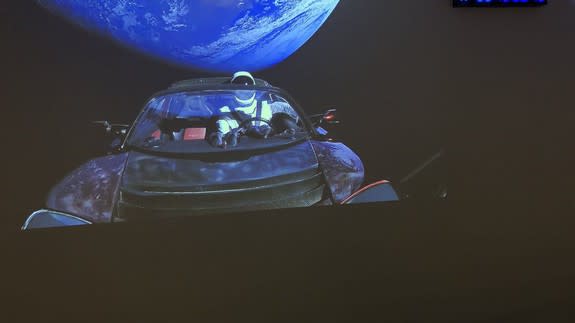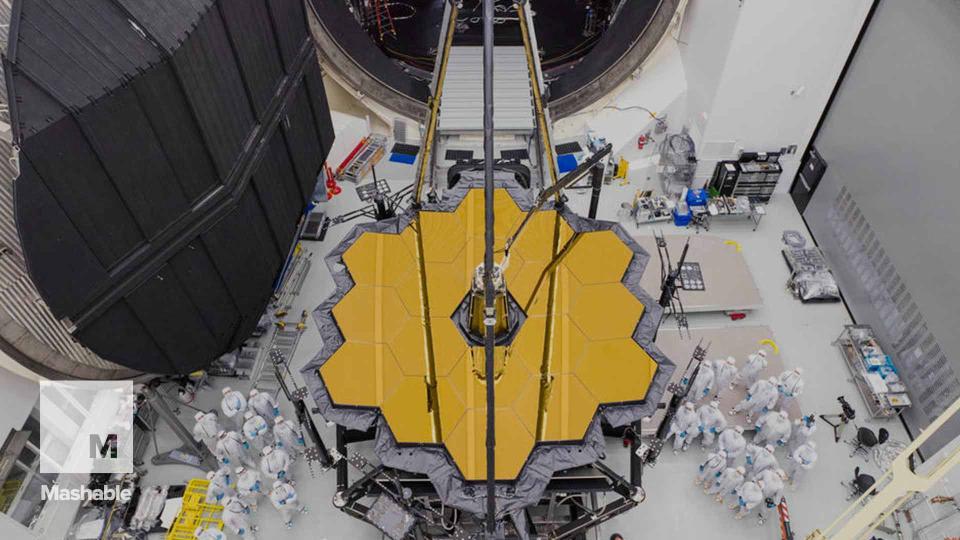Elon Musk's outer space Tesla will overshoot Mars and end up somewhere in the asteroid belt

After spending six hours orbiting Earth, Elon Musk's outer space Tesla rocketed deeper into space.
SpaceX originally planned for the vehicle to end up in a solar system orbit that would at times bring the Roadster near Mars, but it appears the Tesla will overshoot these expectations and travel well beyond the red planet, and possibly into the asteroid belt.
Elon Musk announced last night on Twitter that the cherry red payload and its Starman passenger "exceeded Mars orbit." This doesn't mean that vehicle is already there, as it will take months for the Roadster to travel some 600,000 miles into space. Rather, this is the vehicle's estimated trajectory.
It's not exactly clear where the Tesla will end up, and according to some calculations, it may not make it as far as the asteroid belt, as Musk claims.
Third burn successful. Exceeded Mars orbit and kept going to the Asteroid Belt. pic.twitter.com/bKhRN73WHF
— Elon Musk (@elonmusk) February 7, 2018
As the SpaceX trajectory map illustrates, the Roadster is expected to swing past Mars and approach the orbit of the largest object in the asteroid belt, Ceres, which at 567 miles in diameter, is considered a "dwarf planet.
Using the JPL ephemeris, the closest predicted approach to Mars between now and 2030 is 7 million km on 2020 Oct 8. This is still well outside Mars' gravitational sphere of influence
— Jonathan McDowell (@planet4589) February 8, 2018
It's somewhat remarkable that the last stage of the Falcon Heavy rocket demo mission — which was largely considered a success — worked at all. During a press conference last night at the NASA Kennedy Space Center, Musk expressed concern whether the final stage of the rocket would ignite.
But after being pelted with energized particles in a highly-radiated zone around Earth called the Van Allen belts, the rocket ignited — and performed better than SpaceX engineers envisioned.
SEE ALSO: SpaceX just landed two Falcon Heavy rocket boosters back on Earth, but the third didn't make it
This last stage of the mission was the least important, as SpaceX had already shown that their Falcon Heavy worked and could successfully bring a payload into space. Additionally, two of the three rocket boosters had returned to Earth in a spectacular dual landing:

Image: SpaceX
Still, the final stage certainly wasn't insignificant, as SpaceX illustrated to potential customers that it could send payloads to orbits beyond the red planet.
It's uncertain where exactly the Tesla Roadster, and its Starman mannequin, will more precisely end up. But astronomers are interested, and trying to figure it out.
Still working to make sense of the Roadster numbers. Although C3=34 would be enough in ideal case to reach 2.61 AU, starting from actual TLEs I need C3=40.25 (and end up with 3 deg inclination)
— Jonathan McDowell (@planet4589) February 7, 2018
Asteroid and orbital dynamics people! To arms! (To models!) What is the expected lifetime of an object of this size in this orbit before it hits something? I'll accept an answer to within an order of magnitude. https://t.co/o4eLQJZ3MX
— Emily Lakdawalla (@elakdawalla) February 7, 2018
Space, as we're all keenly aware, is quite large and aptly named, so even in the asteroid belt it's no certainty that the Roadster will smash into a massive space rock (these objects are spaced pretty far apart).
On the other hand, there's a good chance the sports car will be floating through our solar system for millions, if not billions, of years. So there's ample time for a collision — perhaps even with Mars.
WATCH: Here’s how NASA is preparing the largest telescope ever built for space


